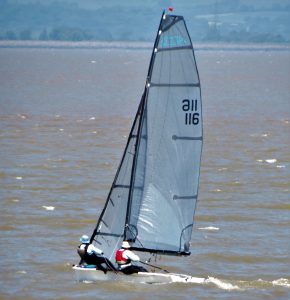Bren Romans, who I am and what I do
I am an artist living in North Somerset, on the edge of the Bristol Channel. I am passionate about birds and the sea so that’s what I draw. I aim to capture the beauty and character of birds, like the colourful but squabbling flocks of goldfinches in my garden, or the majesty of soaring seabirds. I am captivated by the scale and sheer presence of lighthouses. I look for the best angles to capture the whole lighthouse, or might abstract interesting parts of it. Lighthouse optics in particular fascinate me. My aim is to create works of art that enable others to experience the beauty and wonder that I feel in the presence of these subjects.
It began in Liverpool, on the Mersey
The sea and drawing have always been part of my life. I grew up by the docks in Liverpool, and spent a lot of my time walking on the nearby beach or going out to Crosby to see the ships waiting at the bar for a pilot to guide them into the Mersey. I was so impressed by this that at the age of nine I decided to be a Mersey pilot. A trip on the ferry or a drive along the dock road to see the ships was a favourite treat.
As a child I enjoyed drawing my favourite cartoon characters by Giles and Schultz (the Peanuts strip), but it was at university that I really discovered a passion for drawing and painting. A friend kindly loaned me some paints and brushes, and oversaw my first oil painting project – and I was hooked.

At Swansea University I studied Geology, then with my husband Chris I studied Oceanography at Southampton. During our time at Uni, when we weren’t studying, Chris and I would be scuba diving around the coast of South Wales and southern England.
Settled on the Bristol Channel
We looked for jobs on the coast and moved to Bristol in 1979. The water in the Bristol Channel is very muddy, which means it isn’t the best place to dive, so Chris and I took up dinghy racing. It’s a great place to sail, and challenging (it has the second highest tidal range in the world). Sailing gets interesting in the steep chop that kicks up when the wind is against the tide.

By this time I had gone through a number of career plans (there was always a plan), and decided not to be a Mersey pilot, meteorologist, or marine geologist. Instead, I worked in the aerospace, mining, and computing industries, while continuing to draw and paint.
Experiments in painting, drawing and printing
I took art classes and discovered watercolours, coloured pencils and oil pastels, which suited my style better than oils. Then, in 1994 I made the monumental decision to concentrate on my art work.

I enrolled at Bristol School of Art at the Royal West of England Academy (RWA) to take life drawing, painting and printing (relief, etching, and screen printing) courses. It was a turning point when I discovered that I loved relief printing, particularly the cutting process. I studied lino printing and wood engraving under the tutelage of the renowned artist and teacher, Peter Reddick.

I also spent six months in Singapore and took wood engraving tools, paper and inks and produced prints of local scenes and wildlife on the kitchen table.

Spike Island in Bristol Docks
I joined Spike Island Printmakers in Bristol. It is an artist’s cooperative where I collaborated with, and enjoyed the company of fellow printmakers, and the use of excellent printmaking facilities.

While I was at Spike Island I took part in group exhibitions and had solo shows. One was particularly exciting. I set up a stand at the Festival of the Sea in Penzance, Cornwall. I took along my prints, and demonstrated wood engraving techniques to enthusiastic attendees. At the end, to my surprise, I got a ride home on a genuine Chinese junk that was there for the festival. I and five other crew took three days to sail it back to its base at Exeter Maritime Museum. I was fortunate that the mate moved into shared accommodation below and gave up his “cabin” for me. The cabin was a doghouse on deck, about two metres square, one and a half metres high, and furnished with a solitary light bulb.
During this period I also enjoyed artist-in-residence placements at two schools in Bristol where I taught primary and secondary pupils how to design, make, and appreciate lino prints as part of their curriculum.
How I work now
I have since branched out into illustration work using Adobe Illustrator and have created digital brushes that replicate the marks made by lino cutting gouges, and wood engraving tools. These have freed me up to design and create drawings in the style of the relief prints I enjoy and admire. Illustrator is remarkably versatile and allows me to develop my own approach by combining old and new techniques.
Now I am in a great place with my art and am concentrating on drawing what I love best – birds, lighthouses and other marine subjects. I have taken my photography to new levels, collecting reference material for my designs, and in this I have been helped by my husband who is also a keen photographer. My work will evolve as I continue to draw subjects that inspire me, and I explore my chosen medium. I’m looking forward to that.
